Androids Dreaming at the Bottom of the World

Then there appeared at the door a beautiful Baby with blue hair and a white face, like a waxen image, with her hands crossed on her breast. Scarcely moving her lips, she said, "In this house there is no one; they are all dead.”
"Open at least for me, won't you?" cried Pinocchio, weeping.
“I am also dead."
"Dead? And then how is it that vou are at the window?”
“I am waiting for the hearse to carry me away.” Scarcely had she said this when the Baby disappeared and the window closed without making any noise.
Chapter XV, The Adventures of Pinocchio by Carlo Collodi.
In 2001's computer generated original video animation (or OVA) Malice@Doll, androids dream in vivid colors. They remember for us when there are no humans left to do so, no creator-gods to look upon our works and despair at what remains. Androids are the lonely inheritors of humanity's dead world, living beneath its ruins in a derelict city at the bottom of a concrete pit. There is no sky here, no water, no light, no hope. No god.
And yet androids still dream.
What does an android have to dream about in the bottom of a pit, anyway? What do any of us have to dream about when there's no morning coming to wake us?
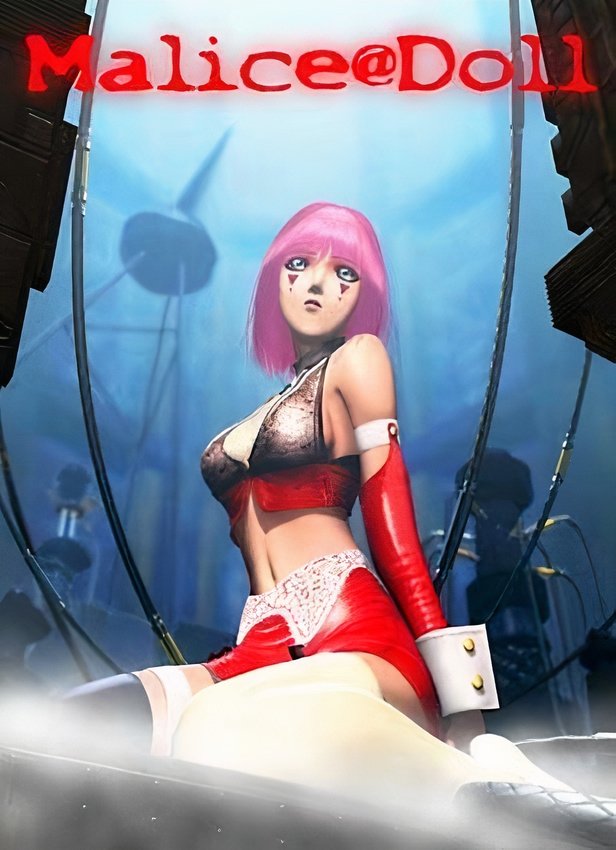
Malice@Doll was released from April to June 2001 by studio GAGA Communications and Soeishinsha Inc. It is a dark fantasy/science fiction and horror series with strong elements of sexuality for a hard 18+ rating. These elements have gotten it talked up in the West as eroguro- or hentai-adjacent, although that reputation is pretty overblown in my eyes.
Sex and sexuality are woven into the fabric of the world, core to explorations of identity, community, and transformation. This isn't to say that there's nothing erotic about the presentation of sexuality in Malice@Doll. After all, the film is quite horny, with the interplay of penetrative tendrils, imposing mechanical forms, and soft bodies, fingers grasping and pistons firing. The girls do be breasting boobily, too, as they tend to do; it just isn't nearly graphic or extreme enough to earn such a specific reputation.
Written by novelist and screenwriter Chiaki J. Konaka, the three-part OVA was directed by Keitaro Motonaga, with photography by Keisuke Arai and music by Y-Project. Character designs are credited to Shinobu Nishioka, with visual concept design by Yasuhiro Moriki, and CGI animation credited to Visual Science Laboratory Inc. with Masaru Yoshioka as the supervisor on the project. As I've learned through trying to research this OVA, there are two things that are always discussed whenever Malice@Doll comes up:
1. You have to mention how writer Konaka carried over many of the theming and motifs from the far more commercially successful and culturally impactful anime Serial Experiments Lain.
2. You have to talk about the CGI.
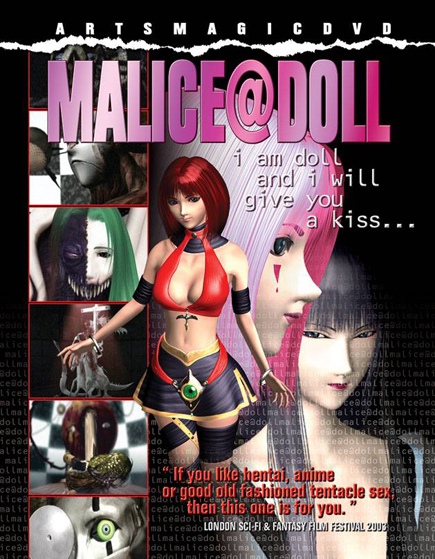
This is a 3D computer animated series from what is widely regarded as a deeply weird, ugly, and uncanny era of CG animation. Malice@Doll itself is certainly a product of its era, with its chunky character designs, unemotive facial models, and high-gloss plastic textures. Either have a soft spot for that kind of stuff in your heart or you don't. If you've been around for my essays about the Galerians: Rion OVA and the Galerians video game series as a whole, you know that I'm partial to some good old CG jank.
While hardware limitations play a role in this gulf between intent and execution, funding and team size often put a hard cap on the ambitions of animators. It doesn't get any more pointed than the fact that Final Fantasy: The Spirits Within came out the same year as Malice@Doll. Compared to the beauty and grandeur of the far more technically masterful The Spirits Within, a far smaller, far cheaper production like Malice@Doll was broadly lost in the marketing and hype.
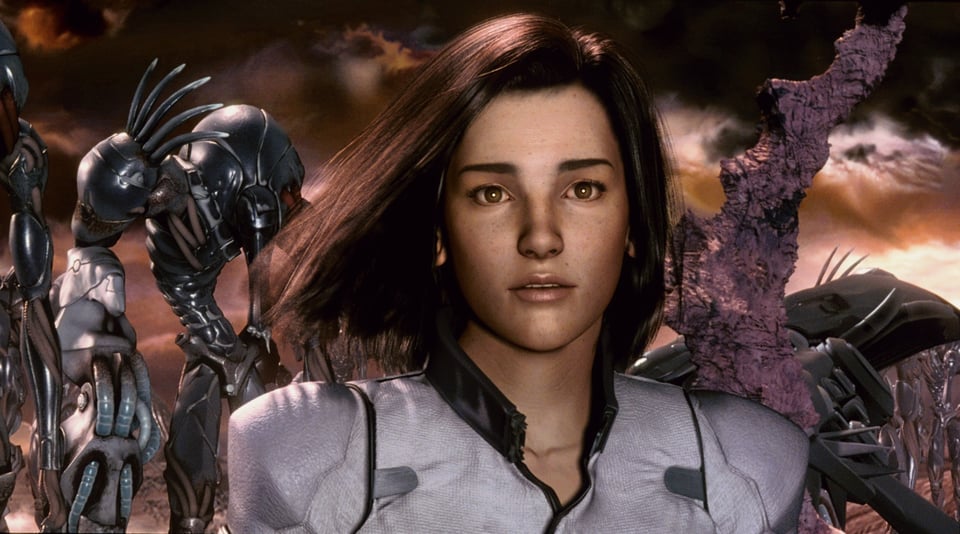
What sets Malice@Doll apart from something like The Spirits Within, which strove to be as sublime as technology and labor costs allowed, is that it takes its strengths from the circumstances of its production. Konaka has cited the traditions of Japanese puppetry and European animation as sources of inspiration. Promotional materials call it an “animated play.” I think that's a wonderful way to put it.
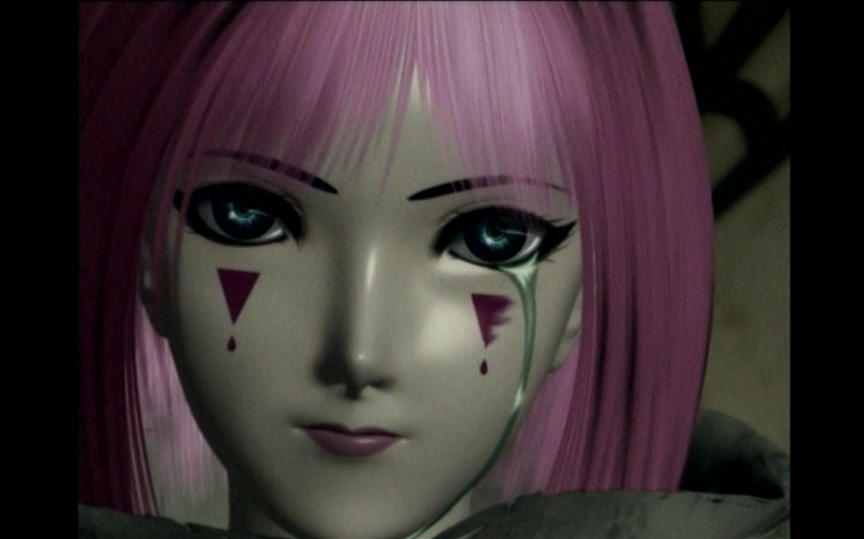
Character designs clash between the voluptuous proportions and soft features of feminine-coded android bodies to the stylized, almost toy-like of masculine-coded machines. Dolls and playthings all, they are appropriately lifeless. Cold. They snap to life when awakened as if by the strings of a puppeteer, but are otherwise still.
The camera sits statically at uneasy angles and commands the characters to move across the plane like marionettes. They do so with the limping staccato gaits of failing machine parts or the squeaky glide of old wheels. The heavy use of montage allows the animators to repurpose still frames and limited animation to evoke dysfunction and despair in ways not possible with sparse dialogue alone. Deep blues, greens, and grays create a grimy, oppressive atmosphere. Eternal night makes excellent use of shadow to obscure the derelict urban sprawl and make its workings all the more vast and unforgiving.
It works because it leans into the artifice of early CG animation, creating a plastic world penetrated by the impossibility of flesh.
So that's discourse point number two sorted. What about the first point? Is Malice@Doll a failed successor to Serial Experiments Lain? Well, no. That's because it isn't trying to be. It’s a play about a doll who dreams of being a real girl, who meets a blue fairy under the remains of a whale and enters the world of flesh with all its terrors.
Malice@Doll is a Pinocchio story for those limping into the 21st and dreaming of blue skies from the bottom of our wells. That makes it very special to me. Hopefully, if I do my job right, I can make you understand why.
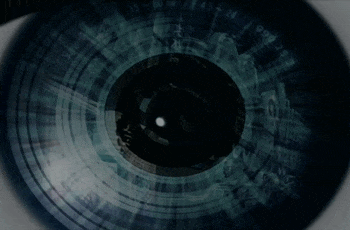
In the far off future of some unknown place, humanity is gone. The only monuments left behind are rambling, underground structures inhabited by a society of machines. Humans made their children in their image: a class of beautiful sex androids, each catering to different fantasies and fetishes, and the administrators, maintenance workers, and security who keep the electric playground running. Now, the city they built for their pleasure is rotting beneath the earth.
The sex androids, called dolls, are separated from the other, less visibly, pleasingly human machines. They wear their sexy costumes and live in the brothel created for them while the laborers and administrators conduct their daily duties. With no customers to gratify, the dolls sleep, but do not dream. Malice, however, does.
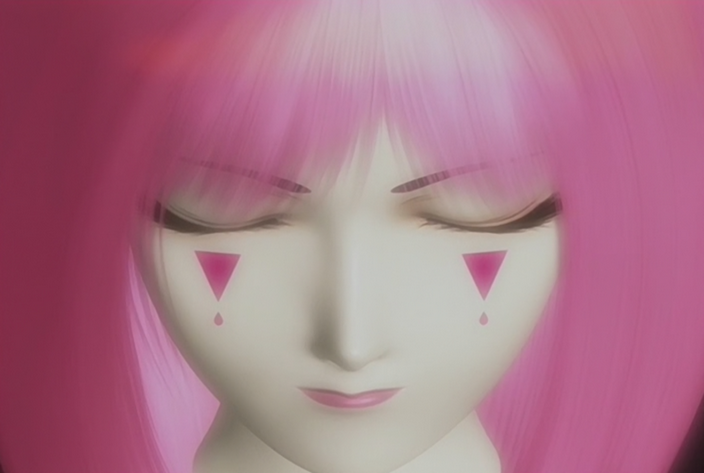
She is a doll who lives in a pink and blue neon room, like a perverse cathedral of stained glass windows that feature images of pleasure rather than piety. Malice dreams of a bouncing blue ball and wakes to take daily strolls. Her programming dictates that she walks the empty streets looking for customers. By her own definition, her only function is to gratify men through companionship, comfort, and sex. Still, she visits the other dolls to say good morning. She references conversations between herself and Heather, the petite girlish cafe maid, when her friend is asleep. There is little else to do but sleep, wearing tattered dresses and lingerie in dank, dusty rooms.
All Malice can offer now is her kiss. It's how she expresses her gratitude or compassion. She gives it to her friends readily, like the worker android Meliza Piper, who accepts it as the gesture of care that it is. It is sexless, unhurried, and sweet. She knows no other way to engage intimately with machines, and has no other value to demonstrate beyond comfort and companionship. Even so, she wants to extend what she possesses to those around her.
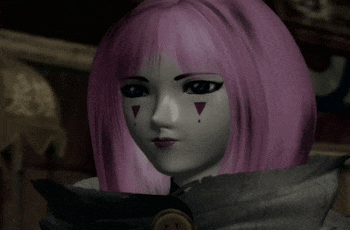
When Malice begins to break down and leak coolant, another friend, the bird-like administrator Joe, tells her to go “upstairs” to the next level. There resides The Repairer who services androids. Dolls serve no function in this world, but they still require care. Malice sets off to find The Repairer and is discovered by Leukocyte instead, the spiked, spider-like security machine. Leukocyte has lost his mind and forgotten his programming alone in the dark, attacking everything he sees. Malice narrowly escapes and finds herself in a strange museum, a hall of dead creatures an android would know nothing about. The skeleton of a whale floats above her, suspended from the ceiling, the bones wafting back and forth as if pushing the body through the seas of a distant world.
Here, Malice sees a young girl in a big hat and tiered dress, her hair done up in ringlets. The girl glows blue and carries a blue ball with her. She smiles kindly and beckons Malice into the final room. Malice enters expecting to meet The Repairer but rather than a workshop or hospital, she stands in a sterile chamber. From the ceiling, a kind of solar system extends, made up of rocky little planets suspended from the arc of a gnarled limb. In the center looms a red moon, one half crescent, the other full. Inhuman eyes stare back at Malice but she feels no fear. Her body is leaking fluid and her limbs are failing. Without attention, she will die a final death as a broken, forgotten thing.
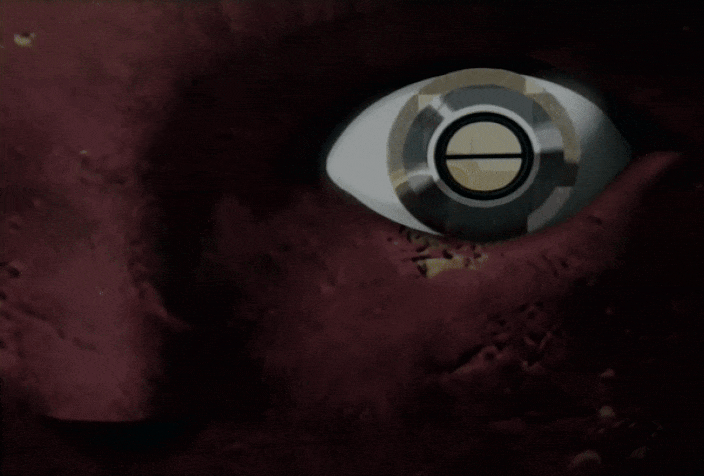
There is no help here. The moon, more an egg than a moon, cracks. Some biological horror -- perhaps human, perhaps alien -- bursts out in a wet slither of tentacles with a swollen, pulsing mushroom head. Pure white feathers poke through the sickening flesh, as one might imagine a fallen angel. Perhaps this is god, the true god, a fleshy amalgam of life in all its potentiality. The tentacles violently penetrate Malice. They tear her apart as the ghostly girl watches the light fade from Malice's eyes.
Then Malice awakes. She hops up from her makeshift bed and laughs at the strangeness of such a dream. Her hinges no longer creak when she stretches and her voice is soft when she chuckles to herself. The body that greets her in the mirror is warm and pleasant to the touch. It feels pleasure and pain in a way Malice never could before.

Awake in a beautiful new body, a world of flesh, Malice goes to share her gift with the other dolls. But she does not consider what such a gift could mean to those who are not prepared for the horrors inherent to the flesh. Her gift requires consent -- a wish, a dream, a desire to change and be changed.
What does a doll know of such things? How can a doll be trusted with the lives of others when she doesn't understand what it means to be alive?
I think what strikes me the most about Malice@Doll is how it approaches the idea of life. What constitutes life. What lives are worth living. What lives should be preserved. It goes beyond the organic versus the inorganic to wrestle with what any of this even means.
Malice the girl, the doll reborn, wants her friends to be alive. Real girls and boys, no longer trapped inside decaying bodies. The city they live in is dead. The resources required to maintain the machines are dwindling and no one is coming to help because there's no one left. Dolls like Doris and Misty are aware (however begrudgingly) of the fates that await them, while Joe, Meliza, and the cleaner Freddy maintain their routines in the face of certain death.
It is bleak. There is no reprieve but for death itself. Which is why I tend to see the machine city with its brothels and bars as less of a sci-fi dystopia and more of a depiction of grief at the end of life, or after a prolonged disability or disease. At least for me, it gestures to those kinds of ideas, moving beyond the categorization of life to contemplate its processes and cycles.
Humans died unceremoniously offscreen and transitioned to whatever punishment or paradise awaited them. Perhaps, more fittingly, they just ceased to be. This is the fate that awaits the machines, who now prolong their inevitable demise through maintenance and routine.
They are not static and eternal the way one often imagines mechanical life; they are dying. They are dying because they are alive. Not in the organic sense, with brains and hearts and livers and things, but the spiritual one. They have minds. They crack jokes and spend time together. They have disagreements and express anger, sadness, and fear. They don't feel physical pleasure or pain due to limitations in programming, but they have emotions.
Malice dreams of being a real girl. Heather dreams of Malice and being like her, like the friend whose kiss she desires.
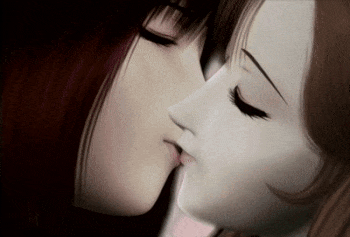
In becoming a real girl, Malice's kiss, her only gift to the world, is now poisonous. It's been imbued with the transformative power of organic life. She injects what she believes to be life into a static, dead world, but the life now contained within her from that horrid union is corrupt. It is painful. It transforms mechanical bodies into flesh without any regard for the minds or souls within those bodies.
Despite her name, Malice is not acting out of ill will. She tenderly approaches each of the dolls and machines with her kiss. Malice wants her friends to be like her, free and warm and alive. She just doesn't understand that the cost of this new life is too steep to take lightly.
The dolls lose their minds like Leukocyte in the tunnels. Their bodies change shape and sprout bulbous eyes or too many teeth. Some get lost in a haze of hedonism as they seek strange new pleasures. Others are victimized now that they can understand the nature of sexual violence. The workers devolve into primal, fleshy things that indulge in such violence, compelled to exercise the full extremity of physical experience. The city's false life has become an orgy of giant slithering eels, sea slugs, and scaly, fish-like creatures, as if dredged from the depths of a primordial ocean. Life does not give them renewed purpose, but sinks them all into an even more loathsome state.
I think it's very interesting that the transformation works differently on different machines, and seems predicated, to some degree, upon consent. Malice gives her kiss to Heather, Amanda, and Freddy, who then spread it to Elsa, Misty, and others. The only characters who choose the kiss knowingly are Doris and Joe, each accepting it after struggling with what could become of them. As such, they retain much, if not all, of their original form the way that Malice does. They make the wish to be alive and so their wish comes true without destroying them. If anything, Joe becomes even more human, even angelic in his new construction, with feathered wings, a recognizably humanoid form, and a face now capable of expression.
In making peace with the change Malice presented, Doris and Joe are able to transcend the horrors that engulf the rest of the machines.
Because, at the core of her journey, what does Malice want? What does she truly wish for when she encounters the red egg? She wants to live in a body free of pain. She wants to have a functioning body that allows her to experience pleasure and pain in a way her doll form didn't allow her. It's such a tiny wish, and a relatable one. If you've ever experienced illness or injury, then you've most likely wished this yourself.
Yet Malice believed the dolls to be cold and unfeeling and incapable of love and
Well
That's not true, is it?
In her languishing state, I think Malice conflated the decay ravaging her body with a kind of soul death. She believed that the other dolls, with their personal conflicts and hierarchies, felt nothing for her. That Joe and Freddy and Meliza felt nothing, her grief projected onto them to override the bonds, however tenuous, that held them together. Death in this state was cruel and no one should suffer it. Perhaps to spare herself such suffering, Malice wished that it wasn't so, and that this state could be replaced with something else.
To approach Malice's stance in fairness, there is a stark difference between her doll self's flat affect and the bundle of emotions embodied by her flesh self. While before she was a dutiful and unquestioning doll, now she is capable of far greater agency. With that sense of agency comes hindsight. The contradictions that arise in her view of herself and her world serve to add a layer of complexity to her subjectivity rather than undermine it.
As a doll, she couldn't comprehend the idea of consent. She couldn't consent to sex or sex work. She was abused by some of her clients and pushed to extremes by others because this was her purpose. Her reason for being. Stepping outside of her programming allows her to conceptualize the dehumanization she experienced and see her clients, her gods, as beings capable of harm. Sexual violence did not register, even during her encounter with the red egg, because she was not capable of being violated. In becoming flesh, the unfeeling penetration of confused machines testing her new body is met with discomfort or rejection.
That shift in perspective allows her to be abused, because she is able to see it as abuse, and to know that she doesn't deserve to be abused. Once changed, she is able to understand that she is deserving of care just the same as anyone else. This is a new and horrifying feeling she must live with forever, to know that she is deserves care and respect and to know that this right has been violated.
Malice is given the space to grapple with these things and that's important, but I don't think she resolves this conflict until the end of the OVA. She was no less capable of being a dreaming, feeling individual in community with others as a doll. She was, and is still, real. I think, to some extent, she doesn't develop the capacity to fully think in such complex terms. Artificial life becomes flattened in her mind. The more complex she is allowed to be, the more confused and unsure of her own feelings, and so the more resolved she is to solve all of their problems for them.
If her life as a doll was not a life, the machines never had lives, either. They should transform with her. It is their duty to transform if given the chance to do so.
Ultimately, Malice minimizes her life and experiences. She minimizes the lives of Heather, Joe, and the others by assigning their existence less value in relation to organic life. In giving them new life, Malice fails to solve the very dire existential crises facing them. They're running out of life-sustaining resources and their bodies are shutting down. The dolls and machines are still going to die, but they're briefly distracted by sex and violence. In the case of Heather, who suffers a fatal wound, she dies bleeding out in fear and pain, faced with a new kind of death she was never designed to see through. Her life was not lesser because she wasn't built to die a human death. Her affection for Malice wasn't a lie just because she doesn't feel it in a human breast.
This, to me, is the real tragedy at the heart of Malice@Doll. These machines were created, given self-awareness, enslaved, discarded, forgotten, and condemned to slow death. Their lives are insulted once more, despite best intentions and a tender touch, by one of their own. Doris, Joe, Heather, and the rest aren't going to survive this, but they have light behind their eyes. They feel for one another, even when their relationships are complicated by grief or anger.
Malice condemns them to a new kind of suffering with love in her heart. On seeing the horror she's wrought, Malice returns to the ghost girl and the red egg to make a new wish: set the world right. The egg doesn't stir and the creature within it doesn't have an answer. Malice lashes out and tears the broken pieces of the stony shell away to expose the core inside.
There, she finds herself, her flesh and blood self, inside the strange heart of the thing. Her glowing double inside the egg tells Malice that she dreamed of dolls with bodies like hers. Malice says that she dreamed of dolls with robotic bodies and unfeeling hearts. Faced with these contradicting wishes and the realities they create, Malice questions which is the true dream and who is the true dreamer.
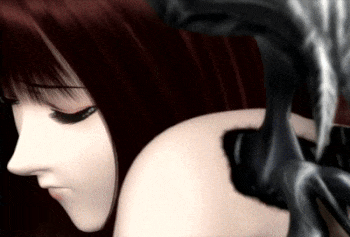
The egg demands her sacrifice once more, in a less violating act of transformation. Malice fuses with the egg and her double inside of it. She'll dream a different dream, she resolves. This time, she assumes the form of an angelic white creature, a mermaid of the sky, as the machine city below resets.
Heather is alive and the other dolls are themselves again. Joe fights off Leukocyte and the workers work. All that remains of Malice is her lilting voice as she flies over the streets and sings. They don't remember her, or what happened. Heather chases after Malice, laughing, happy, wishing Malice luck as she flies out of the tunnel to the promise of sky above.
Malice was a kiss, and now she is a song.
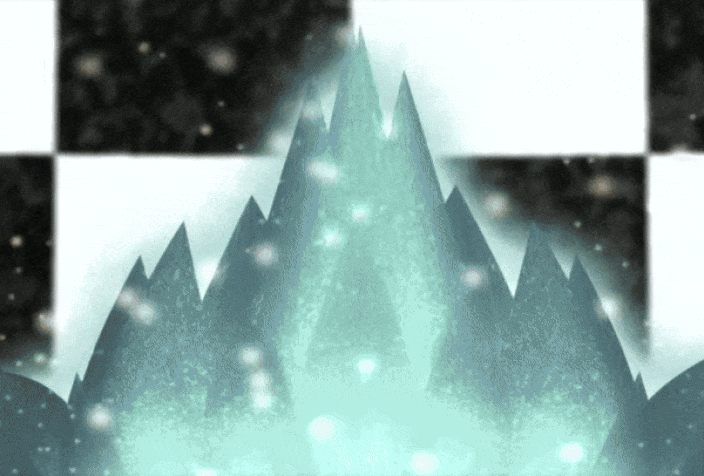
It's probably very easy to see Malice@Doll's story as a treatise on acceptance. A part of me does, I think. In accepting that she is dying, maybe dead, maybe never real at all, Malice transcends both metal and flesh to become something closer to god. I do rather like the idea that a doll, a toy for human entertainment, skipped the line and found the egg of some primordial god who pulled the monstrous life from the depths of earth's past onto the future's shores.
I think it's also probably easy to think of the OVA in terms of man versus machine and the temptations (and corruption) of the flesh. Maybe you went down the rabbit hole of marking allusions to The Adventures of Pinocchio. Maybe you think of the machine city as samsara, the characters all trapped in cycles of death and rebirth until they can achieve enlightenment the way Malice does.
But I don't think Malice@Doll is meant to be taken so literally as to impose a singular meaning upon it. To me, Malice@Doll is about grief and dealing with an impending death. It's also about radical transformation as a means of asserting your autonomy when you have nothing but your body to enact it with. It's about spiritual transcendence. It's about challenging inert power structures. It's about what it means to participate in a community for all its rough edges and blind spots.
I don't really know what happened, to be honest. I'm not sure if Malice was a real girl who dreamed she was a doll or a doll who dreamed she was a real girl. I don't know if the ghost girl is some remnant of human consciousness or a memory or a blue fairy. For what it's worth, I don't think the red egg is of human or alien design but rather representative of natural life itself. I think of it as the manifestation of life in all its potential forms, and as such, essentially divine. Not of god, but of the universe, existing beyond the limitations of moral and philosophical constructs to perpetuate itself infinitely for its own sake.
I do think that in joining with the egg, in giving herself up to radical potential by choice rather than happenstance, Malice becomes something far greater than merely being alive. She's a song, a force, a light in the darkness flying toward new possibilities. I also think that this is the ultimate hope at the heart of Malice@Doll: that everyone can change and be changed. That each of us contains the potential to transform and transcend. We must walk knowingly into that future, aware of its costs and consequences, in order to become something greater than ourselves.
If Malice can change, so can Heather, Joe, and the rest. We're not trapped by our programming limitations or our stations in life. We don't have to simply wait for death or numb ourselves with distraction. We can become so much more.
You can become so much more.
And it can start with a kiss.
Animated gifs and most of the artwork courtesy of the Anime Characters Fight Wiki.
Citations & Additional Reading
A Kiss of Death/Life: The Formation of Cyborg Subjectivity in Malice@Doll (2001)
Malice@Doll Segment of Final Fantasies: A History of CGI Animation by Jonathan Clements
Add a comment: